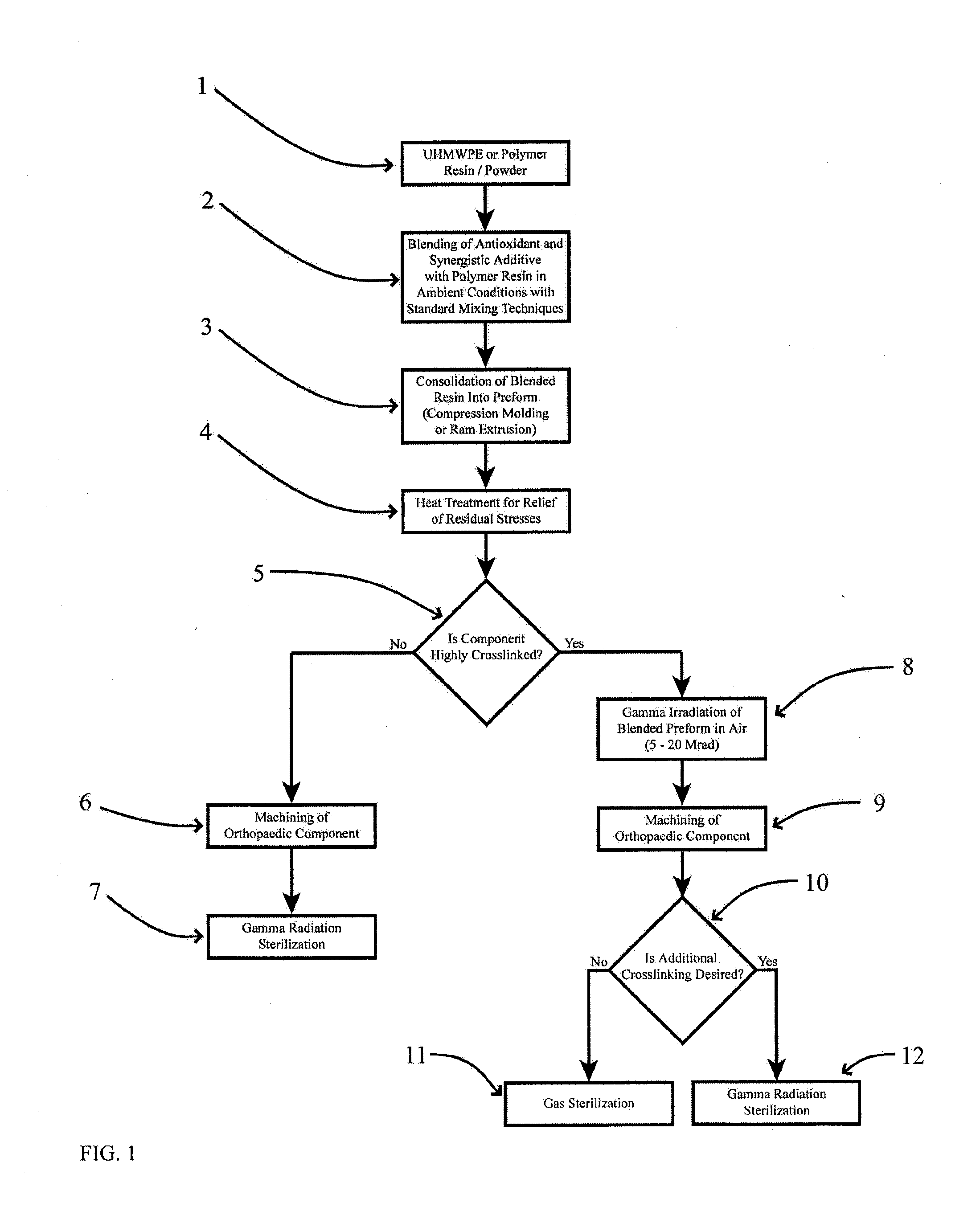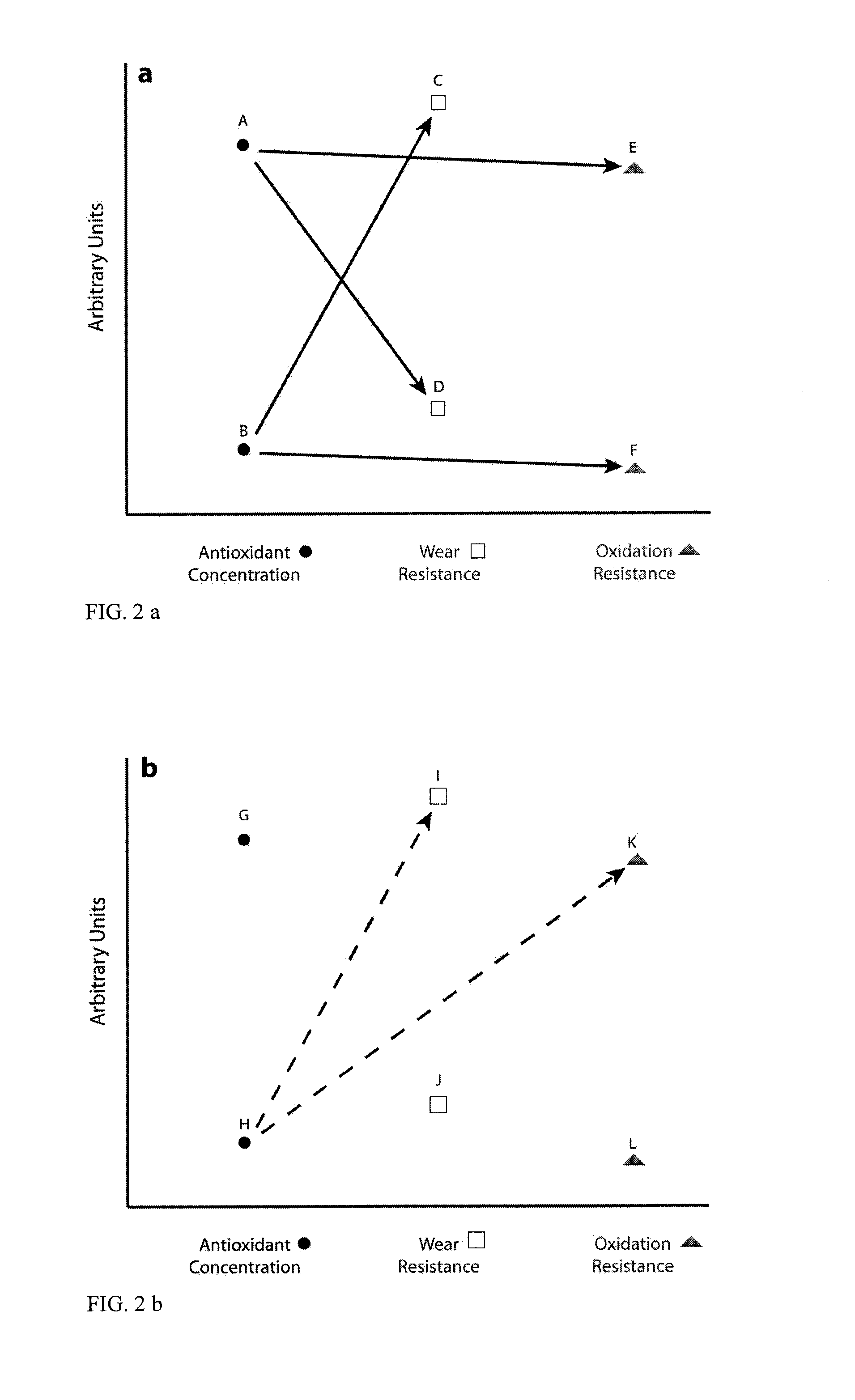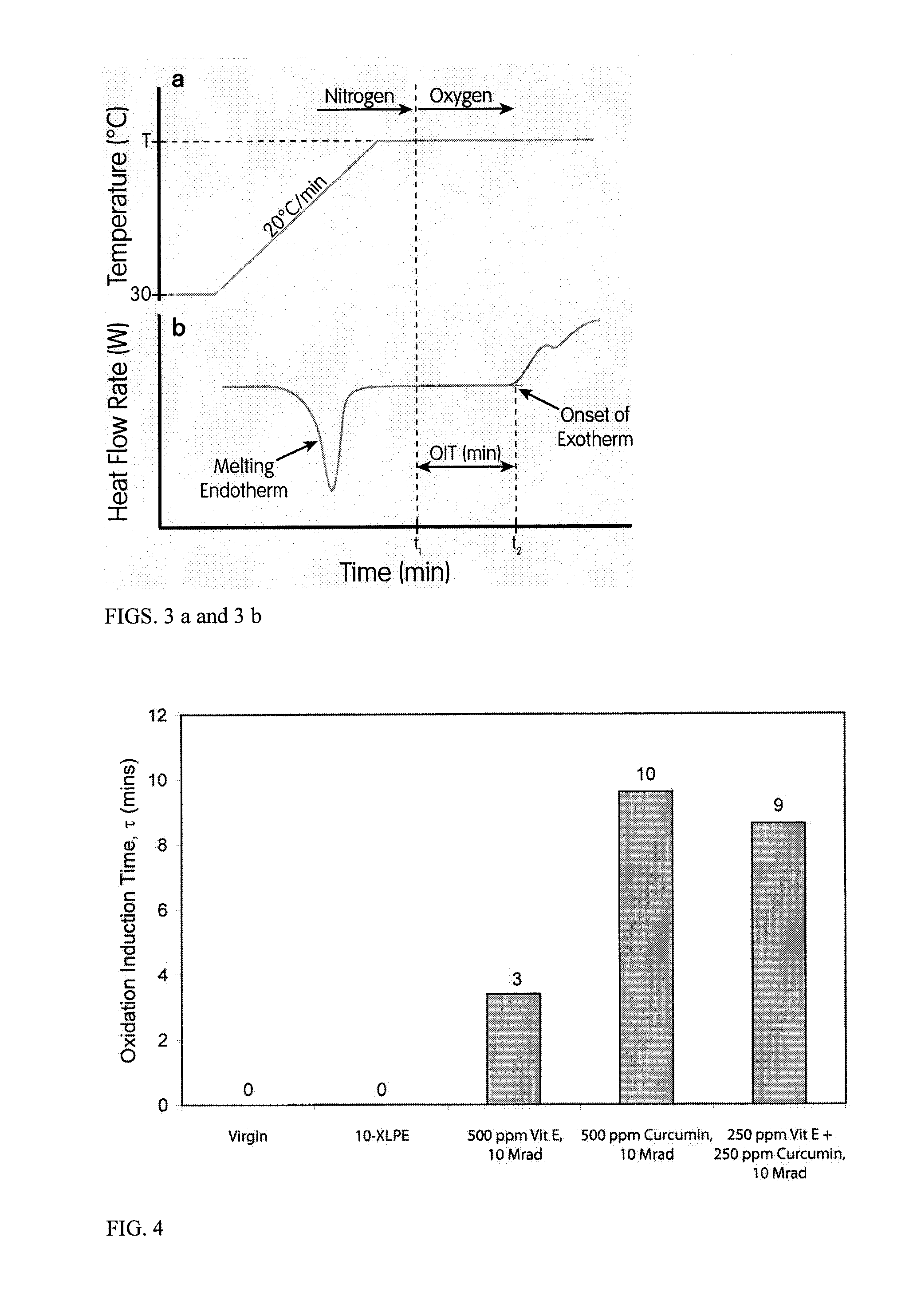Synergistic effects of blending multiple additives in uhmwpe
a technology of additives and blending, applied in the field of oxidation resistant polymers, can solve the problems of reducing yield and ultimate tensile strength, reducing crystallinity, and oxidation of polymers, and achieve the effect of improving the oxidation resistance of materials
- Summary
- Abstract
- Description
- Claims
- Application Information
AI Technical Summary
Benefits of technology
Problems solved by technology
Method used
Image
Examples
example 1
[0113]Now referring to FIG. 1, Step 1 indicates the selection of the polymer resin or powder to be used as the starting material based upon the application and the required performance / properties. For example, the polymer resin could be GUR1050 or GUR1020 ultra-high molecular weight polyethylene (UHMWPE), Teflon, polyurethane, polyetheretherketone (PEEK), thermoplastic elastomers, etc. In Step 2, this selected polymer resin is combined with at least two synergistic additives by blending in ambient conditions with standard blending / mixing techniques such as planetary, ribbon, tumble, vertical, rotary, plow, cylindrical or blade blending. In certain cases low molecular-weight fractions of the polymer may be used to achieve uniform distribution of the antioxidant additives. The low molecular-weight fractions allow a lower melting point constituent that may allow diffusion of antioxidant and thus uniform dispersion. As an example, lower molecular-weight fraction polyethylene can be blen...
example 2
[0115]Neat GUR1020 UHMWPE resin was combined with the following:[0116]Material A—dl-alpha-tocopherol (vitamin E or Vit E) at a nominal concentration of 500 ppm (0.05 wt. %),[0117]Material B—Purified curcumin, or diferuloymethane (97.7% by HPLC), at a nominal concentration of 500 ppm (0.05 wt. %),[0118]Material C—dl-alpha-tocopherol and purified curcumin at nominal concentrations of 250 ppm (0.025 wt. %) each
[0119]It should be noted that dl-alpha-tocopherol, also known as all-rac-alpha-tocopherol, refers to synthetic vitamin E that is an all-racemic mixture of approximately equal amounts of the eight possible stereoisomers (i.e., alpha-tocopherol, beta-tocopherol, gamma-tocopherol, delta-tocopherol, alpha-tocotrienol, beta-tocotrienol, gamma-tocotrienol, and delta-tocotrienol). These materials were then consolidated by compression-molding, annealed to relieve residual stresses, and subsequently gamma-irradiated with a nominal dose of 10 Mrad (100 kGy). Following irradiation, no heat ...
example 3
[0130]Neat GUR1020 UHMWPE resin was blended with the following:[0131]Material A—dl-alpha-tocopherol (vitamin E or Vit E) at a nominal concentration of 500 ppm (0.05 wt. %),[0132]Material F—dl-alpha-tocopherol and dipentaerythritol (DPE), a non-antioxidant polyhydric alcohol, at nominal concentrations of 300 ppm (0.03 wt. %) each.
[0133]These materials were then consolidated by compression-molding, annealed to relieve residual stresses, and subsequently gamma-irradiated with a nominal dose of 10 Mrad (100 kGy). Following irradiation, no heat treatments were conducted.
[0134]Again, two control materials were also evaluated. Neat GUR1020 UHMWPE was consolidated, annealed to relieve residual stresses and remained in the unirradiated condition (Material D—virgin). In addition, neat GUR1020 UHMWPE was consolidated, annealed to relieve residual stresses, gamma-irradiated with a nominal dose of 10 Mrad (100 kGy), and re-melted to stabilize the highly crosslinked material (Material E—10-XLPE)....
PUM
| Property | Measurement | Unit |
|---|---|---|
| hold temperature | aaaaa | aaaaa |
| weight average molecular weight | aaaaa | aaaaa |
| molecular weight | aaaaa | aaaaa |
Abstract
Description
Claims
Application Information
 Login to View More
Login to View More - R&D
- Intellectual Property
- Life Sciences
- Materials
- Tech Scout
- Unparalleled Data Quality
- Higher Quality Content
- 60% Fewer Hallucinations
Browse by: Latest US Patents, China's latest patents, Technical Efficacy Thesaurus, Application Domain, Technology Topic, Popular Technical Reports.
© 2025 PatSnap. All rights reserved.Legal|Privacy policy|Modern Slavery Act Transparency Statement|Sitemap|About US| Contact US: help@patsnap.com



